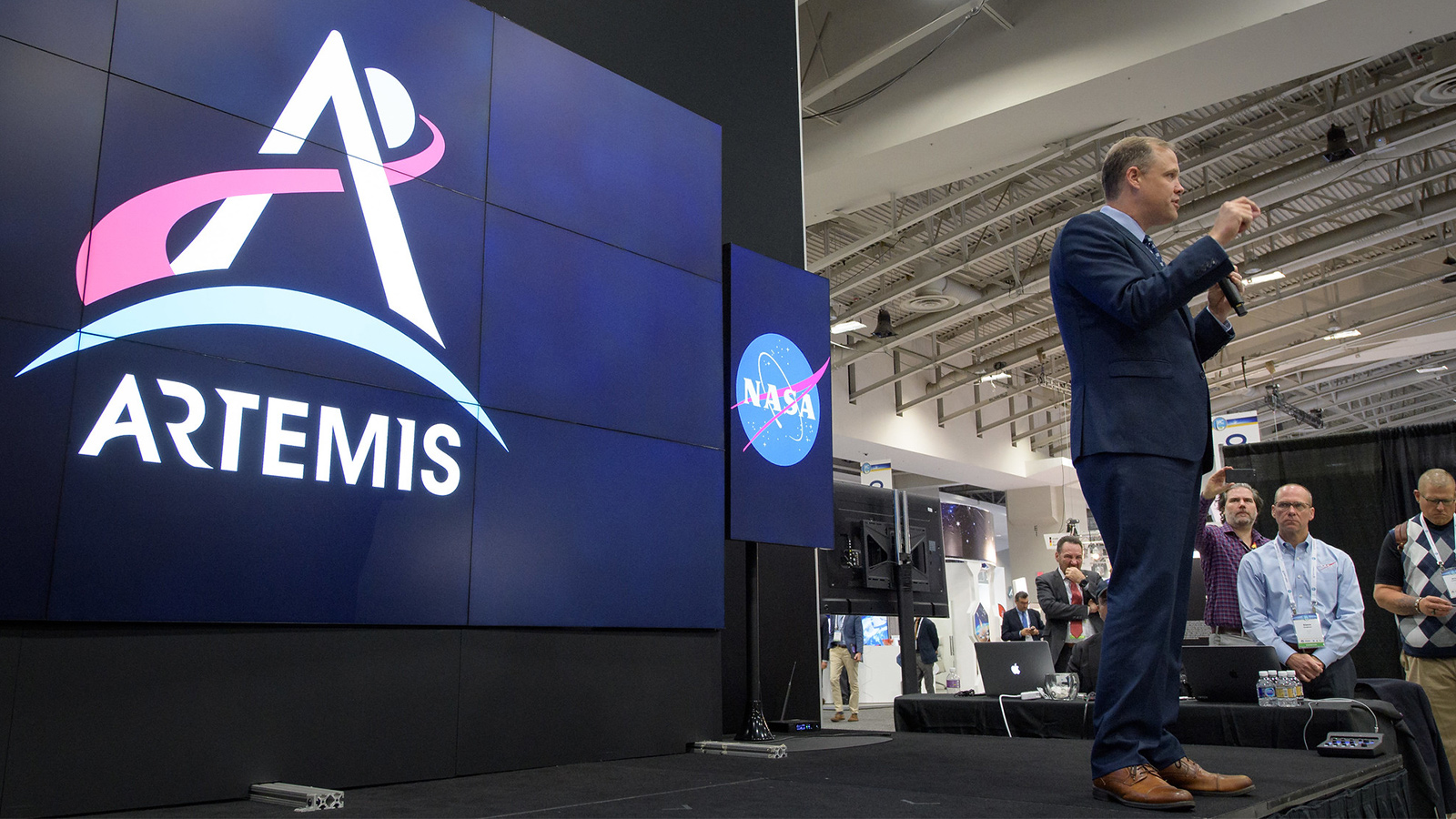Stay Up to Date
Submit your email address to receive the latest industry and Aerospace America news.
SpaceX and Boeing could start Commercial Crew flights in first half of 2020
INTERNATIONAL ASTRONAUTICAL CONGRESS, Washington, D.C. — As anxious as the United States is to once again launch Americans on U.S.-made rockets and spacecraft, it’s still “highly likely” that NASA will need to purchase at least one more ride on a Russian Soyuz spacecraft, NASA Administrator Jim Bridenstine told reporters today.
NASA astronauts have been catching rides to the International Space Station in Soyuz capsules since 2011, when NASA ended the space shuttle program. NASA’s multibillion-dollar Commercial Crew program was supposed to end that reliance in 2017, but neither contractor has yet managed to get its spacecraft up and flying with crews. SpaceX completed an uncrewed flight to the station in March, but that Crew Dragon capsule was destroyed in April during a static test fire, forcing SpaceX to switch the first crewed launch to one of the remaining five capsules it is building. Boeing has yet to fly its CST-100 Starliner design.
Bridenstine said the contractors are now having “very good success” in their preparations, but he nevertheless expects NASA “to make the request to Roscosmos for at least one additional Soyuz seat — maybe additional after that.”
Otherwise, the April 2020 launch of one American astronaut with two cosmonauts would be the last Soyuz ride. NASA will say only that it expects Boeing and SpaceX to start flying crew members in “the first half” of 2020, making the need for at least one more ride likely. NASA must apply for a congressional waiver to buy more Soyuz rides and negotiate a price with Russia.
“At this point, we haven’t started those negotiations yet,” Bridenstine said. The last time NASA purchased seats, Russia charged $86 million each. (Story continues below)
If Boeing and SpaceX do start flying crew members to the ISS in 2020, NASA astronauts won’t be their only passengers. Bridenstine said Russian cosmonauts will fly on the Commercial Crew spacecraft under a barter arrangement that calls for Americans to fly on Soyuz capsules. This strategy will ensure “permanent American presence on ISS,” Bridenstine said.
“We want the relationship between NASA and Roscosmos to continue to be strong,” he added, so “we’re going to need to launch on Soyuz rockets anyway and they will have to launch on Commercial Crew rockets.”
As for the progress cited by Bridenstine, he may have been referring to a planned Nov. 4 pad abort test of the Boeing Starliner capsule at White Sands Missile Range in New Mexico. In this test, flight controllers will fire Starliner’s thrusters on the launch pad to verify the capsule can “rapidly separate itself in time and distance from the launch vehicle should something go perilously wrong,” said Chris Ferguson, a Boeing astronaut and director of Starliner crew and mission systems, during a Tuesday panel here on Starliner.
Pending success of that test, Starliner’s first uncrewed flight is scheduled for Dec. 17, when it will launch from Space Launch Complex 41 in Florida atop a United Launch Alliance Atlas V rocket and dock with the ISS.
Meanwhile, SpaceX is gearing up to launch a Crew Dragon to test the in-flight abort system, in which SuperDraco thrusters would pull the spacecraft up and away from a failing Falcon 9 rocket. SpaceX was preparing for the test in April when a fuel leak and explosion destroyed the capsule. The company hasn’t announced a date, but SpaceX founder Elon Musk has tweeted that he’s targeting late November or early December.
Also on the scene:
- Bridenstine continues to be more vocal about the probability of a human mission to Mars in the “mid-2030s,” a date he first voiced at the unveiling of the Artemis spacesuit at NASA Headquarters in Washington, D.C. Today, he said he believes a “2033 or 2035” Mars mission is possible “if the budget is there.”
- Earlier in the week, Bridenstine met with officials from 26 countries interested in participating in Artemis. While there’s lots of enthusiasm, “we don’t know who’s doing what yet,” he said. “We’re trying to understand what other countries bring” to the end goal: a sustainable lunar presence by 2028.
- How will the ongoing impeachment inquiry into President Donald Trump affect funding for Artemis? “I honestly don’t know,” Bridenstine said, but stressed that the program has “strong bipartisan support” in Congress.
About cat hofacker
Cat helps guide our coverage and keeps production of the print magazine on schedule. She became associate editor in 2021 after two years as our staff reporter. Cat joined us in 2019 after covering the 2018 congressional midterm elections as an intern for USA Today.
Related Posts
Stay Up to Date
Submit your email address to receive the latest industry and Aerospace America news.




